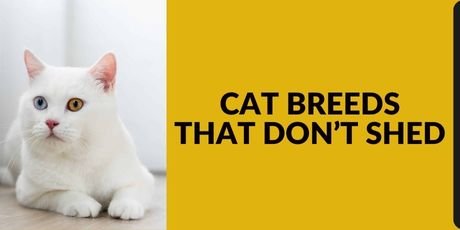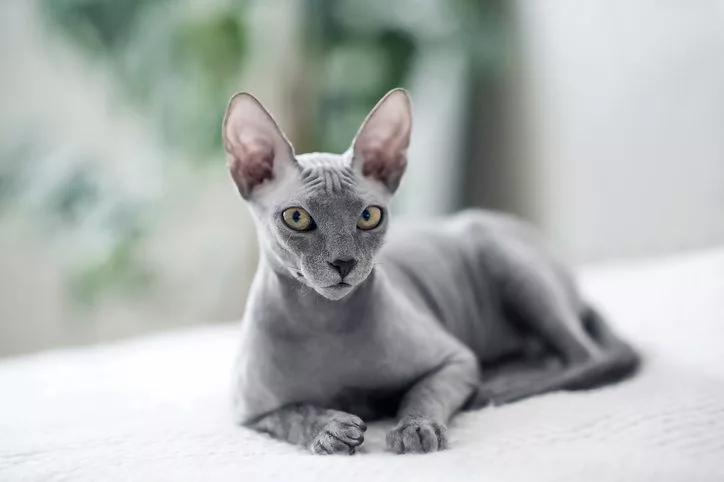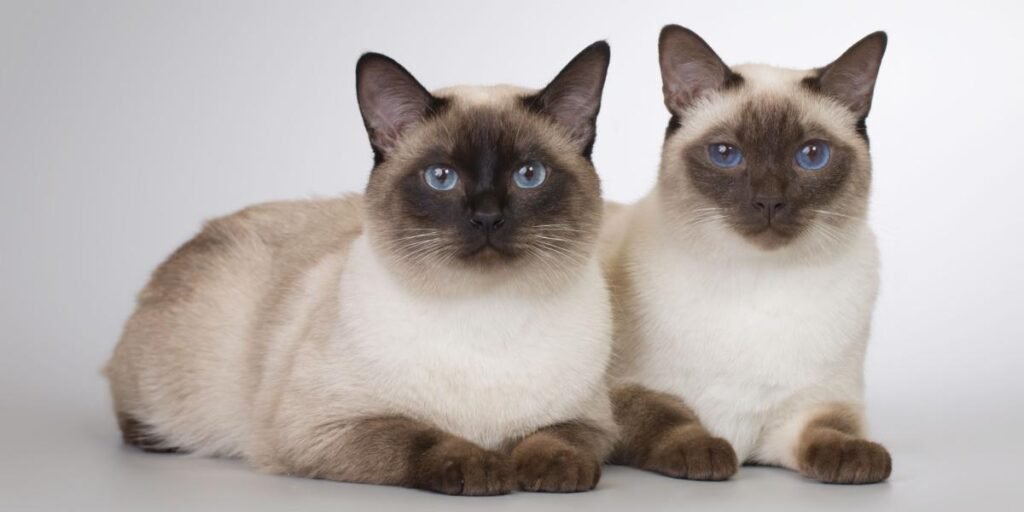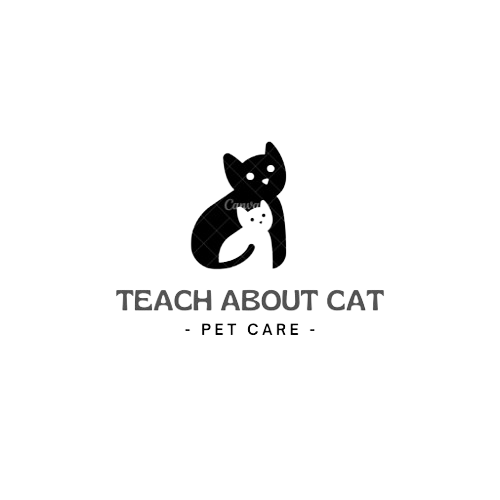As someone who adores cats but struggles with allergies, I’ve always been curious about hypoallergenic cat breeds. The term “hypoallergenic” often brings a sigh of relief to allergy sufferers, but is it really as straightforward as it sounds? Let’s delve into this topic, using my personal journey as a guide.
It’s a common misconception that cats that don’t shed are automatically hypoallergenic. In reality, the main culprits behind allergic reactions are not the cat hairs themselves, but the allergen-causing protein found in cats’ saliva, urine, and dander. This protein sticks to the fur, which, when shed, becomes airborne and triggers allergies. Hence, low-shedding cats are often mistakenly believed to be 100% hypoallergenic.
Can You Shave a Cat?
In my experience as a grooming specialist, I often encounter the question: “Can you shave a cat to help with shedding?” The answer is nuanced. While shaving can seem like a quick fix for shedding, it’s crucial to consider a cat’s fur as an essential tool for regulating body temperature. During summer or warmer months, a light trim can be beneficial, but a drastic haircut is rarely advised.
Cats rely on their coat not only for temperature control but also as protection against skin conditions and injuries. An overly aggressive shave can leave them vulnerable, especially if they spend time outside. Their lack of coat compromises their natural temperature regulation. Furthermore, shaving can be traumatizing for some cats, causing stress and anxiety.
Instead of shaving, regular brushing – either daily or weekly – is a healthier alternative. It keeps the fur in good condition and minimizes shedding effectively. For cats prone to tangles or mats, consulting an experienced pet groomer is advisable. They can provide specific care without resorting to extremes. In short, while shaving might seem like a solution, it’s essential to weigh the risks and seek advice from experts in cat care.

Cat breeds that don’t shed
-
Hairless Breeds
When discussing cat breeds that don’t shed, the intriguing world of hairless cats comes to mind. Deciding to adopt a hairless cat offers a unique experience in cat ownership. Contrary to popular belief, these cats require a distinct form of grooming.
While they lack traditional cat fur, it doesn’t mean they are maintenance-free. Instead of brushing, hairless cats need a regular sponge-bathe or wipe down to remove accumulated oils and dirt from their skin. This routine should ideally be performed weekly to keep their skin healthy.
-
Sphynx
Among hairless breeds, the Sphynx cats hold a special place. They may lack a traditional furry coat, but they compensate with their charming personality and unique physical traits. The Sphynx’s body is covered with a fine down, often described as peach fuzz, giving them a distinctive feel. This breed is sturdy, medium-boned, and surprisingly athletic, belying their delicate appearance.
Their muscular cat physique is matched by an equally strong personality. Sphynx cats are known to be the center of attention in any household, being extremely outgoing and affectionate. Their unique coat or rather, their lack of fur requires specific grooming needs. Regular cleaning is essential to maintain their skin health, as they can accumulate body oils more readily than their furry counterparts.
Also Read: Do Cats Recognize their Owners
-
Peterbald
The Peterbald cat, a lesser-known but fascinating hairless breed, is renowned for its varied coat types. Some Peterbalds have a peach-like fuzz, while others possess a wiry or wavy brush coat. There are also individuals with a short velour coat, and even some with a normal short coat.
Their striking almond-shaped eyes and large, pointed ears give them an elegant appearance, and their slim, muscular bodies often resemble those of their parent breeds, the Oriental Shorthairs and the Donskoy cat.
As a rare breed, Peterbalds are not just visually unique; they’re also known for their intelligent, aggressively affectionate nature, and their playful antics make them a delightful addition to any home.

Cat Breeds That Don’t Shed a Lot
For those who prefer a cat with minimal fur maintenance and want to avoid finding errant hairs everywhere, certain breeds stand out. The rex cat varieties, known for their unique, curly coats, are an excellent example. They typically shed far less than many other breeds. Among short-haired cat breeds, there are several options that shed infrequently, depending on the time of year.
-
Devon Rex
The Devon Rex cat, often hailed as the pixie of the cat world, captures hearts not only with its impish looks but also with its low shedding trait. A natural mutation led to their distinct soft, wavy down hair that rarely sheds. This small breed, characterized by oversized ears and an elfin face, combines the whimsical appearance of a fantasy creature with the endearing qualities of a pet.
As a cat enthusiast, I find the Devon Rex particularly appealing for their mischievous personality and affectionate, people-oriented nature. They’re often found seeking warmth and comfort on their owner’s lap, making them ideal companions for those who cherish close bonds with their pets. The fact that they require minimal grooming just an occasional wipe down to keep their fur in top condition – is a bonus for busy cat lovers.
-
Cornish Rex
The Cornish Rex cat, with its distinctive curly coat, is a standout among low-shedding breeds. This coat, short and lying close to the body, rarely sheds, making the Cornish Rex a desirable choice for those who love cats but not the fur they leave behind. Their fur is exceptionally soft to the touch, primarily because it mainly consists of the undercoat and lacks guard hairs.
As an owner of a Cornish Rex, I’ve noticed that despite the minimal shedding, they do require some upkeep due to their coat’s tendency to become oily. A simple, regular wiped down is usually sufficient, eliminating the need for frequent combing. Beyond their grooming needs, these cats are known for their fun-loving nature. This kitty is always up for a game, especially if it involves their humans.
-
American Wirehair
The American Wirehair stands out in the realm of cats that don’t shed much, thanks to its unique wiry coat. This breed, often compared to the rex for its coat texture, has a surprisingly soft touch. When stroked, the coat springs back, a testament to the coat’s coarseness. Originating from parents that ranged from smooth to rough, the American Wirehair has developed a distinct wiry texture that effectively captures loose hairs, reducing the amount they shed.
In addition to their grooming benefits, this breed is known for being exceptionally adaptable, affectionate, independent, and playful. They often resemble American Shorthairs in appearance and share many of their traits. Owning an American Wirehair has been a joy for me, as their personality is as engaging as their coat is unique.
Their adaptability makes them suitable for various living environments, and their affectionate nature ensures they are more than just a low-shedding breed. They bring a blend of playfulness and independence to their interactions, making them a cherished companion for those who appreciate a cat with character and minimal shedding.
-
Siamese
The Siamese cat, with its striking contrast of long physical features and a short coat, is a splendid choice for those who prefer a low-shedding cat. Their glossy, sleek coat lies close to the body, boasting a fine texture that sheds minimally. The Siamese is renowned for its iconic colorpoint coat pattern, with point colors like seal, chocolate, blue, and lilac enhancing their elegant appearance.
Beyond their coat, Siamese cats are cherished for being incredibly talkative. They are known to whine or pout for attention, making them a favorite among fans of vocal and entertaining pets. This breed is not for those seeking a quiet cat; instead, their engaging and communicative nature forms a significant part of their charm.
In my own experience with a Siamese cat, their expressive personality, coupled with their low-maintenance coat, makes them an endlessly fascinating and affectionate companion, ideal for cat lovers who enjoy interactive and lively feline company.
Also Read: Why is My Cat Growling?
-
Abyssinian
The Abyssinian cat, a marvel in the feline world, stands out for its unique ticked tabby coat. This coat is not just short but also glossy and soft to the touch, resembling the cougar-like elegance of wild cats. Their fur, predominantly ruddy with hints of red coloring, is dense yet remarkably resilient against shedding. This characteristic makes them a low-maintenance companion, sparing owners the hassle of intense grooming.
These cats are not just about their striking coat; they are incredibly energetic and well-muscled, displaying lithe and graceful movements. The Abyssinian craves attention and playtime, making them an engaging pet for those who adore active interactions. Their playful nature is a testament to their vibrant personality.
-
Singapura
The Singapura cat is a fascinating bundle of contradictions. Known as one of the smallest breeds, it sports a short, close-lying, and fine fur that is a joy to pet. This glossy coat, with its ticked tabby pattern, primarily in brown and sepia hues, is not only stunning but also remarkably low-shedding.
What the Singapura lacks in size, it more than makes up for in personality. They’re notoriously mischievous, often found exploring every nook and cranny of the house. As a loving kitty, they are curious and thrive in social settings, always eager to greet you at the door and become involved in daily activities. Their presence adds a dynamic and affectionate energy to any home.
-
Javanese
The Javanese cat, a lesser-known but enchanting breed, is often mistaken as a mere semi-longhair version of the Colorpoint Shorthair or Siamese. However, this breed stands out for its low shedding quality, despite its (semi) long-haired nature. The fur of the Javanese comes in a variety of colors, including captivating shades of red and cream. Remarkably, this fur doesn’t tangle easily, making it a breeze to maintain.
Beyond their physical traits, Javanese cats are known for their loving, vocal, and people-oriented nature. They love to follow their humans around the house, often eager to converse throughout the day. Their presence is akin to having a furry, talkative, and endearing shadow.
-
Russian Blue
The Russian Blue cat, with its distinctive short, dense, double coat, remarkably sheds very little. This breed’s fur, tipped with silver, has a shimmery quality, feeling plush to the touch and surprisingly easy to maintain. Its long, slender bodies give it a slinky appearance, which is quite captivating.
Despite their somewhat curious and reserved nature, Russian Blues are both gentle and playful. They are fond of being cuddled yet display a healthy dose of independence. Loyal to their family, these cats can be shy around strangers, but their affectionate demeanor makes them a cherished member of any home.
-
Korat
The Korat cat stands out as a distinct breed hailing not from Russia as one might guess, but from Thailand. Their unique single layer of blue-silver fur requires very minimal grooming, making them a perfect choice for those who prefer cats that don’t shed much.
Korats are notably outgoing and vocal, forming strong bonds with their humans. They are incredibly affectionate, often found lounging on a lap or staying close to their owners during busy times. Their presence brings a loving and spirited energy to any home.
-
Havana Brown
The Havana Brown cat, with its short, glossy, chestnut coat, is a unique breed born from the parentage of Siamese, Russian Blues, and black Domestic Shorthairs. This richly colored fur is not only striking but also low in shedding.
Known for being sociable, intelligent, and exceptionally playful, Havana Browns are akin to puppies in their love for games like fetch. They rarely get bored as they have an innate ability to entertain themselves. Their active and engaging demeanor makes them delightful companions.

Also Read: How to Tell If you’re Cat Has Whisker Fatigue?
These Cat Breeds That Don’t Shed Will Save Your Couch
For the allergy sufferer who loves cats, there’s good news: a handful of hairless or low-shedding breeds could be the perfect fit. These breeds, known for not shedding much, can help alleviate itchy eyes and a runny nose. Not only are they a relief for allergy sufferers, but they also save you money and time, as there’s less need for constant cleaning and lint rollers.
Managing Your Cat Allergies
According to the American College of Allergy, Asthma, and Immunology, avoiding cats entirely isn’t the only way to manage allergies. For those who can’t imagine life without these sweet, snuggly animals, there are several treatments to mitigate side effects.
Dr. Vogel suggests options like antihistamines (such as Claritin or Zyrtec), intranasal steroid sprays (like Flonase or Nasonex), and over-the-counter oral decongestants. However, consulting an allergist to determine the best course of action is always advisable.
- Wash your hands after petting or playing with your cat.
- Use a lint roller to remove excess hair from clothes.
- Regular Grooming: Keeping your cat well-groomed and bathed regularly is vital. This practice helps to lessen the amount of loose hair and dander, which are primary allergens for many people.
- Effective Home Cleaning: Utilize a vacuum with a HEPA (high-efficiency particulate air) filter to remove excess hair and fine particles from your home. Regular dusting also helps in reducing airborne allergens.
-
Donskoy
Recognized by the International Cat Association, the Donskoy is an elegant breed that stands out with its coat types, varying in a variety of colors. Known for its hairlessness, the Donskoy is a low-shed cat, often sporting patchy fur or a short peach-fuzz that is soft to the touch. Beyond their unique appearance, Donskoys are sociable creatures who love being the center of attention in any gathering.
-
Bengal
The Bengal cat, with its distinctive and stunning coat, featuring vivid spots and leopard-like marbling, is a marvel of the feline world. Their coats, resembling their wild cousins, are velvety soft and known for minimal shedding. Recognized by the Cat Fancier’s Association, these cats are not just visually appealing but also curious, athletic, and incredibly affectionate.
Bengals are known for their love to play, making them an engaging and intelligent companion in any household. Their dynamic nature and interactive demeanor are perfect for those who seek an active and loving pet.
-
Bombay
The Bombay cat, often described as a mini panther, boasts a sleek, black coat that embodies elegance. Recognized by the International Cat Association, this breed’s short, tight coat is perfect for those seeking minimal upkeep, as it requires very minimal shedding and maintenance. Just an occasional brushing keeps their shiny fur in tip-top form.
Not only is the Bombay smart and inquisitive, but they are also remarkably outgoing and friendly. Their easy-going nature makes them suitable for busy homes, where they effortlessly become part of the family, keeping everyone entertained with their playful antics.
-
Ocicat
The Ocicat stands out with its gorgeous, spotted coat, combining beauty and practicality. This low maintenance breed minimally sheds, making it a favorite among cat enthusiasts like Keiger.
Its tight coat is recognized by the International Cat Association and maintains its splendor with just weekly brushing using a rubber brush to remove dead hair. The Ocicat’s spotted pattern comes in various colors like brown, chocolate, cinnamon, blue, lilac, and fawn.
This breed is not only visually striking but also energetic and devoted, making it perfect for an active home. For pet parents who enjoy regular playtime, the Ocicat offers endless entertainment and companionship.
-
Minskin
The Minskin, a unique cross between the Sphynx and Munchkin, boasts a sparse coat with patches of dense, soft fur primarily on the face, ears, nose, legs, and tails. This minimal coat not only gives them a distinctive look but also means it sheds less than many other breeds. Minskins come in all colors and patterns, adding to their appeal.
Despite their short legs, Minskins are surprisingly athletic and playful, often outperforming their longer-legged counterparts. Their outgoing nature makes them wonderful companions for both people and other animals, fitting seamlessly into diverse home environments.
Also Read: What is a Cats Average Lifespan?
-
Tonkinese
Tonkinese cats are celebrated for their soft, minimally shedding coat. This short and silky texture makes them a delight for petting enthusiasts. Recognized by the Cat Fancier’s Association, Tonkinese come in up to 12 coat colors and patterns, offering a stunning variety.
These cats are not just visually appealing; they are verbose and inquisitive, making perfect buddies and companions. Known to entertain their pet parents with their fun-loving antics, Tonkinese cats are ideal for those who cherish interactive and lively pets.
Conclusion
The world of low-shedding and hypoallergenic cat breeds offers a delightful solution for cat lovers grappling with allergies or those simply seeking a low-maintenance pet. Breeds like the Sphynx, Cornish Rex, Devon Rex, Peterbald, and Bengal not only bring unique aesthetics and personality to our homes but also significantly reduce the challenges of pet hair and allergens. Embracing these breeds means enjoying the joys and companionship of a feline friend without the usual concerns of excessive shedding. Whether you’re an allergy sufferer or just appreciate a tidy home, these cats prove that you can have the best of both worlds a loving pet and a clean, comfortable living space.







